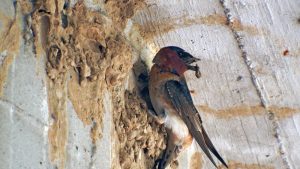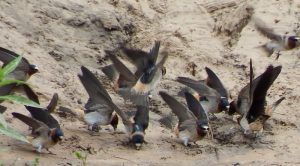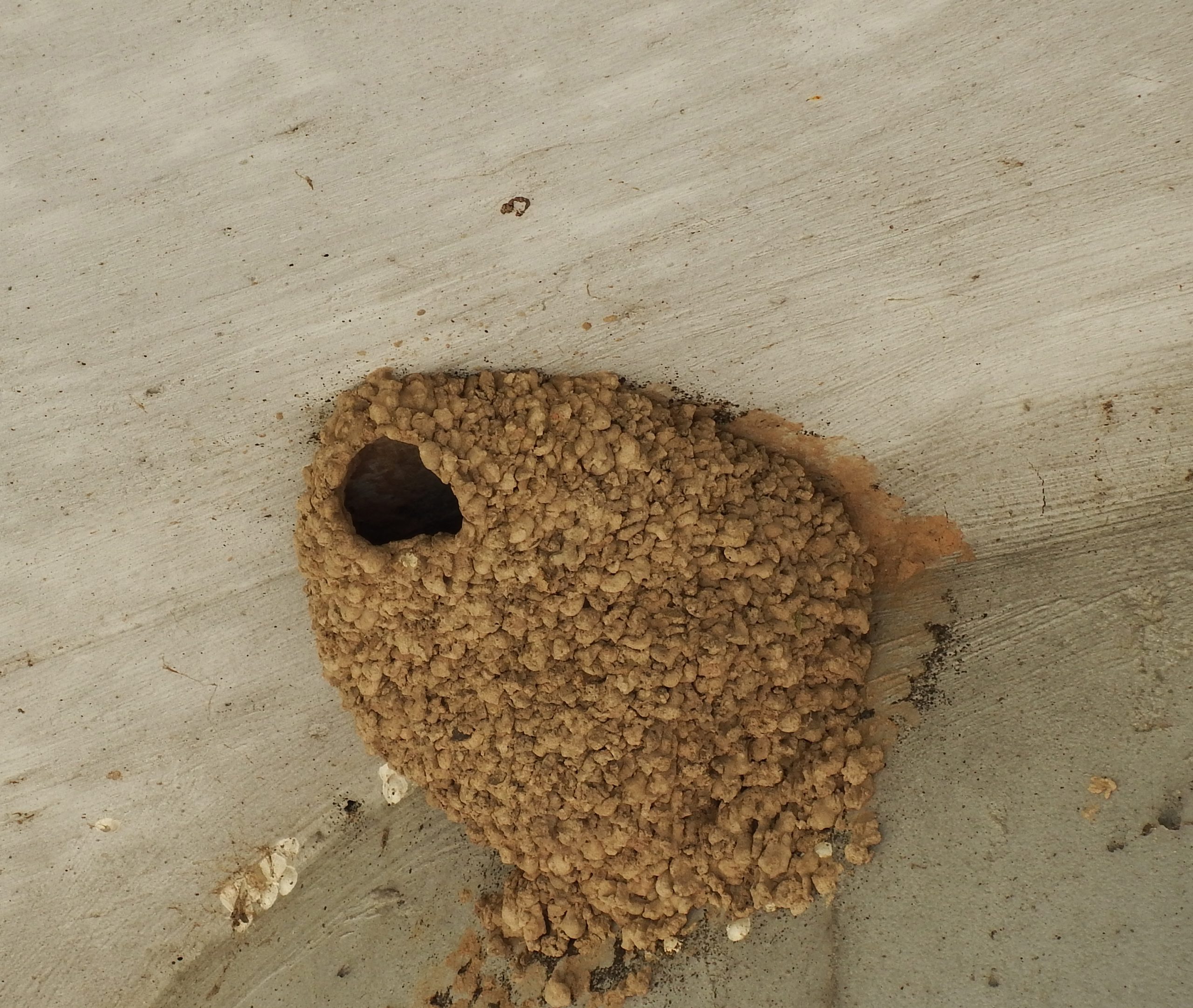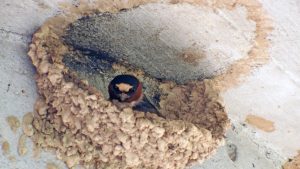Swallows return to Buffalo Bayou

At first, the male Swallows gathered mud from the bayou banks and built a perch — the basis for the mud nest that was to follow.
For the next few weeks, there is a spectacle of nature taking place right under the Waugh Drive Bridge. Not the bats, although they live there, too, but the Cliff Swallows. The colony has almost 100 birds. Each Spring, the colony returns from South America and refurbishes their mud nests that are built on the columns of the Waugh Drive bridge. The same bridge the bats live under. This year, they returned to find their nests destroyed. Victims of Harvey, their nests were scoured away by the overwhelming flow of the bayou.

The Swallows collected mud from the banks of the bayou to build their nests. Each nest takes about 1,400 trips of mud collection to finish. Most years, they just touch up the nest from the prior year, but this year, the colony had to rebuild from scratch.
They returned a few weeks ago and like true Houstonians, immediately set to rebuilding! The result of their work is easily visible from the paths on either side of the bayou under the bat bridge.
At first, the males gathered mud from the near-by bayou banks and bit by bit, built small perches. They sat there, showing off their skill at picking a nesting site until the next day, they were each joined by a female, and together each pair made approximately 1400 round trips to gather a dab of silt/clay from the bank and using it to build a nest. As soon as they have even a small cup constructed, the female probably started to lay her eggs.
Right now, it seems the pair is taking turns sitting on the eggs while the other swoops around and feeds on flying insects. Soon, you will see each nest brimming with chicks begging to be fed. When that happens, the parents will be very busy flying back and forth to gather insects and feed their quick-growing young.

This is a finished nest. In a few days, each nest will be full of babies and their parents will be making trip after trip to feed their growing family.

This is a half finished nest. At the top, you can see the outline of the old nest that got washed away by Harvey. Almost all the new nests are in the exact spot of old nests because the males used the remnants to start rebuilding.
The whole show will be over in a week or two, so if you are near the bat bridge, take a walk beneath it and take in the spectacle. Activity can be frenetic and easily seen even without binoculars. But if you have field glasses, bring them along. You can peer into the entry of the nests and see the little ones waiting to be fed.

